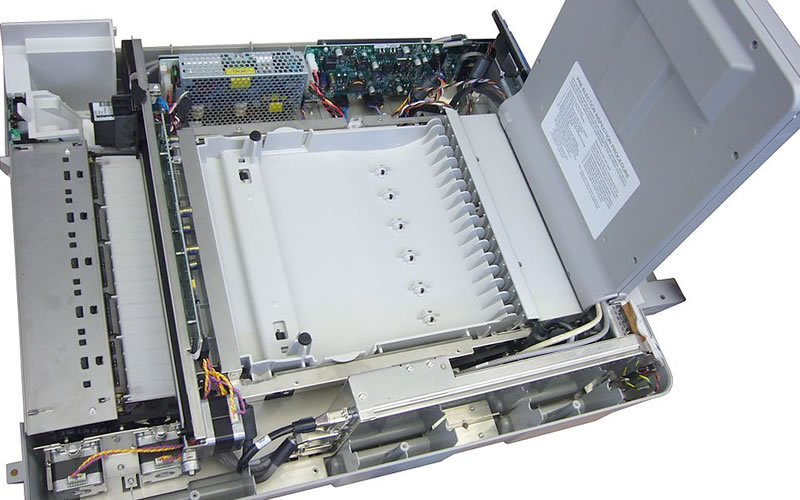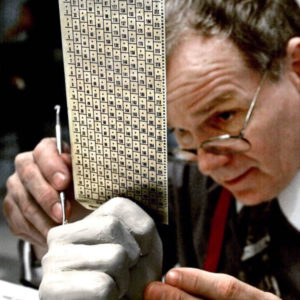
By Duncan Buell, special to Statehouse Report | How can we be sure that we have a meaningful voice as citizens of our representative democracy?

At the most basic level, democracy is about voting. South Carolina’s State Elections Commission and our county commissions are working hard to ensure that South Carolina’s elections will be trouble-free and secure in November 2018. However, our current iVotronic voting computer systems are old and outdated. New systems must be in place by 2020, and that means getting to work soon to select and purchase secure and reliable technology to serve South Carolina in the coming years.
A range of voting equipment options now exists. The League of Women Voters of South Carolina encourages careful consideration of all systems in order to select a system that meets the standards of the national League for security, transparency, and auditability.
Most similar to the current equipment are “ballot marking devices” (BMDs), which are made by several manufacturers. These are normally touchscreen computers that present versions of the ballot to the voter, who makes her ballot selections with the touchscreen. In current systems, these choices are generally printed to a paper record. In most instances, the voter is presented with the physical paper record, is permitted to verify that the names chosen (or yes/no options chosen) are as she intended, and then the paper record is scanned for tabulation by an optical scanner.
These BMDs can be an improvement over the current paperless iVotronic voting computers used in South Carolina in that a paper record is generated so that a post-election audit is possible. However, most BMDs fail the transparency test. With most BMDs, the tallying is done not from the English text the voter sees of the choices made, but from a barcode that is supposed to encode those choices but whose values are not known to the voter. If one were to do a post-election statistical audit of the barcodes against the textual versions, one could verify that the barcodes were the same as the text, but even with this audit it would not be the case that the voter actually was able to verify her choices at the time of voting.
With at least one version of a BMD from a major manufacturer, the paper ballots go directly into a bin inside the BMD, and the tallying is done by the BMD. Although there is a paper record that the voter views, in this mode the BMD is really no different from an iVotronic with the paper trail mechanism attached.
Use of BMDs has not always gone smoothly. In some jurisdictions there has been controversy because not all the candidate names fit on one screen. In South Carolina, where candidates are always listed alphabetically, candidates with surnames toward the end of the alphabet might always appear on a second screen. In some jurisdictions, such as Nevada in the spring primary, the screens were configured incorrectly and some candidate names were never presented to the voters. Since the paper record listed only the choices made and not all possible choices, some voters never knew they had not been presented with all options. Nevada has recently admitted that it could not reliably determine who won an election in Clark County using their new BMDs and has been forced to call a special election.

Ballot marking devices do have advantages: They can prevent overvoting (choosing too many candidates) or undervoting (choosing no candidates or too few candidates). They can be linked to audio or other output for accessibility. At their core, however, they are computers that must be configured for each election, running software that is not visible and producing outputs that cannot be trusted unless there is an independent way to audit the output (such as an audit of textual choices compared to the barcodes).
In sharp contrast to the BMDs, many jurisdictions are continuing to use or returning to the use of paper ballots marked by hand by the voter and scanned with optical scanners. This may seem low-tech, but the use of hand-marked paper eliminates nearly all the problems with BMDs.
With hand-marked paper, the voter sees the full ballot and marks her choices, either by filling in bubbles, or connecting an arrow pointing to a candidate’s name, or similar standard mechanism. Few voters will not have had experiences filling in such forms. The paper ballots are then scanned with optical scanners; in South Carolina this would take place in the precincts.
Hand marked paper has two major problems. First, there must be a secure chain of custody for the paper ballots themselves. In South Carolina, with precinct totaling, it would be difficult to corrupt an election by substituting an entire box of ballots between the precinct and county offices, because the precinct totals would not match. Nonetheless, the chain of custody is important.
Second, we are all familiar with the problem of badly marked forms. How do we count, for example, an “X” that isn’t a filled in bubble? Fortunately, scanning technology is very good and is improving, so this is less an issue than it might have been 20 years ago. More importantly, with a paper ballot, the paper itself can be viewed by humans and the choices adjudicated.
And finally, the use of hand-marked paper with optical scanners in the precincts means that the only unknowable technology used in the election process is the scanner technology that tabulates votes. There are no computers with unknown software. No touchscreens to go out of calibration. The only software is the scanning software itself, and that can readily be audited and verified by testing with known patterns of ballots.
Weighing these choices, hand-marked paper is the system that most closely conforms to national League of Women Voters standards. It is truly voter verifiable because the voter reads the same ballot markings that the scanner reads. However, when a system is chosen there is another very important criterion for evaluation of systems, cost. Our next article will address the relative costs of these systems, both in purchasing them and in maintaining them, using comparative data from states that have recently purchased new systems.
Duncan Buell, a member of the League of Women Voters of South Carolina, is NCR Professor of Computer Science and Engineering at the University of South Carolina.
- Have a comment? Send it to: feedback@statehousereport.com.















 We Can Do Better, South Carolina!
We Can Do Better, South Carolina!